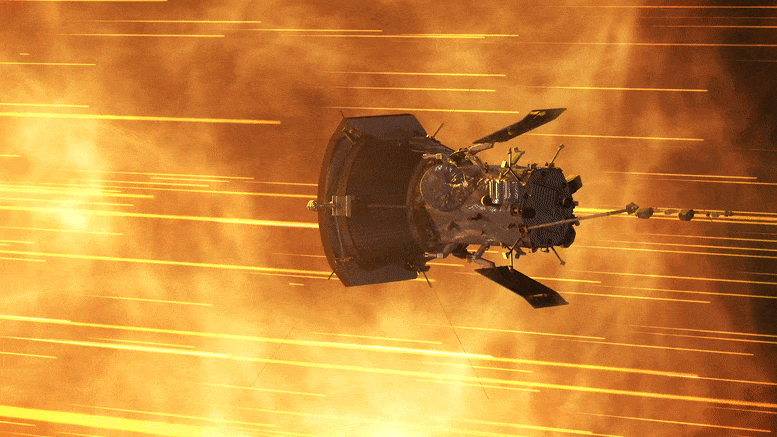"These interactions between the Sun's coronal mass ejections and interplanetary dust were theorized twenty years ago, but were not observed until the Parker Solar Probe saw that the coronal ejection acts like a vacuum cleaner, removing the dust from its orbit"

On September 5, 2022, NASA's Parker Solar Probe glided gracefully through one of the most powerful coronal mass ejections (CMEs) ever recorded—not only an impressive feat of engineering, but also of great benefit to the scientific community. Parker's journey through the CME helps prove a theory from twenty years ago about the interaction of CMEs with interplanetary dust, which has implications for space weather forecasting. The results were recently published in The Astrophysical Journal.
interactions between CMEs and interplanetary dust
A 2003 paper theorized that there are interactions between CMEs and interplanetary dust that surrounds our planet and that they may even carry the dust outward. CMEs are huge emissions from the Sun's outer atmosphere - the corona - that help cause space weather, which can endanger satellites, disrupt communication and navigation technologies and even disable power grids on Earth. More knowledge about how these events interact with interplanetary dust could help scientists better predict the speed of CMEs from the Sun to Earth, and predict when they will impact it.
Parker now observed this phenomenon for the first time
"These interactions between CMEs and interplanetary dust were theorized twenty years ago, but not observed until the Parker Solar Probe saw a CME acting like a vacuum cleaner, clearing the dust from its orbit," said Guillermo Stenburg, an astrophysicist at the Johns Hopkins Applied Physics Laboratory in Laurel, Maryland. , and the lead author of the paper. The laboratory built and operates the spacecraft.
The effect on interplanetary dust
This dust consists of tiny particles from asteroids, comets and even planets, and is found throughout our solar system. The zodiacal light, a kind of faint glow sometimes seen before sunrise or after sunset, is one of the manifestations of the interplanetary dust cloud.
The CME pushed the dust about ten million kilometers from the Sun - about one-sixth the distance between the Sun and Mercury - but it was replenished almost immediately by the interplanetary dust that floats around the Solar System.
Parker's observations from the field were critical to this discovery, because it is difficult to characterize the dynamics of the dust after CMEs from a distance. According to the researchers, Parker's observations could also provide insight into phenomena closer to the corona, such as dimming of the corona caused by low-density regions that often appear after CMEs erupt.
The scientists noticed an interaction between theCME and dust as reduced brightness in images from the WISPR camera. This is because interplanetary dust reflects light, increasing the brightness where the dust is. To locate the reduced brightness, the team had to calculate the average background brightness of the WISPR images over several similar orbits - and filter out normal brightness changes that occur due to solar streamers and other changes in the Sun's corona.
More of the topic in Hayadan:
- NASA launched Parker, the spacecraft that will come closest to the Sun
- Touch the sun: NASA will launch a spacecraft closer than ever to the sun
- The Parker Solar Probe flies through the Sun's outer atmosphere for the first time
- Ayalon Cave, where very rare species of beavers live, is on the brink of an ecological disaster
- Initial tests of the comet dust began in Houston. Operation Stardust is crowned with success
